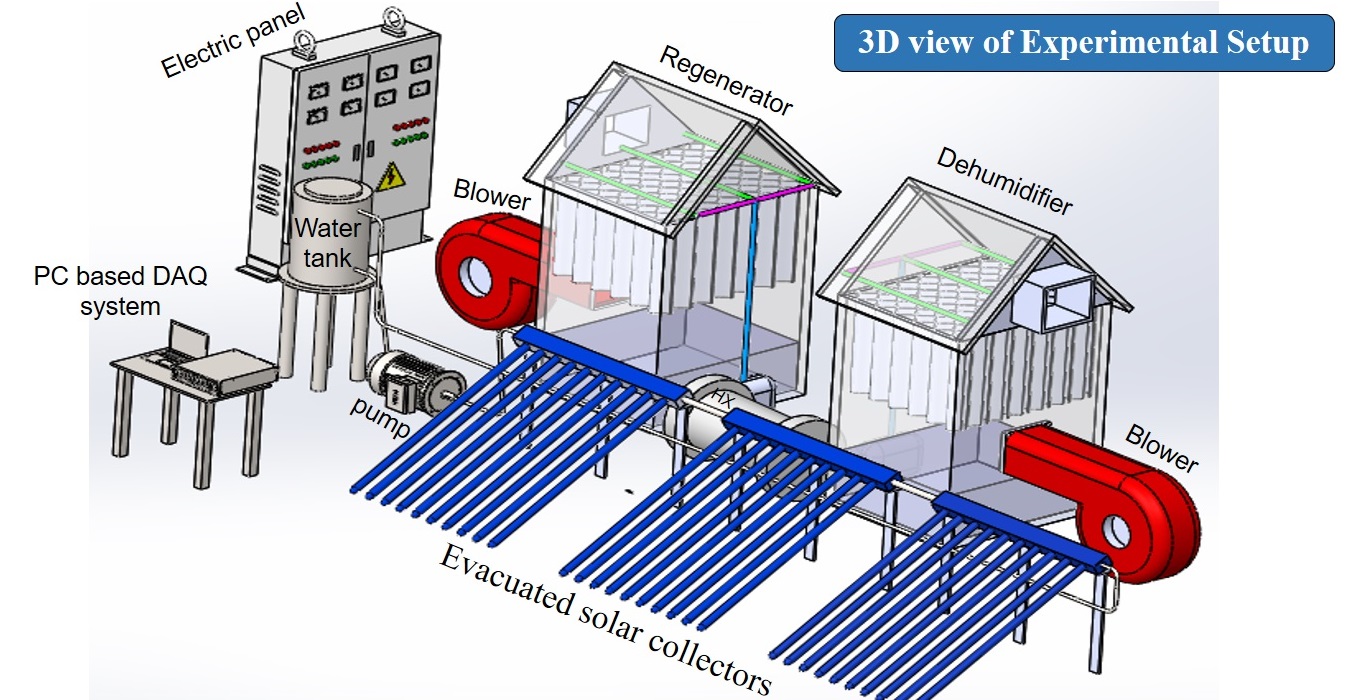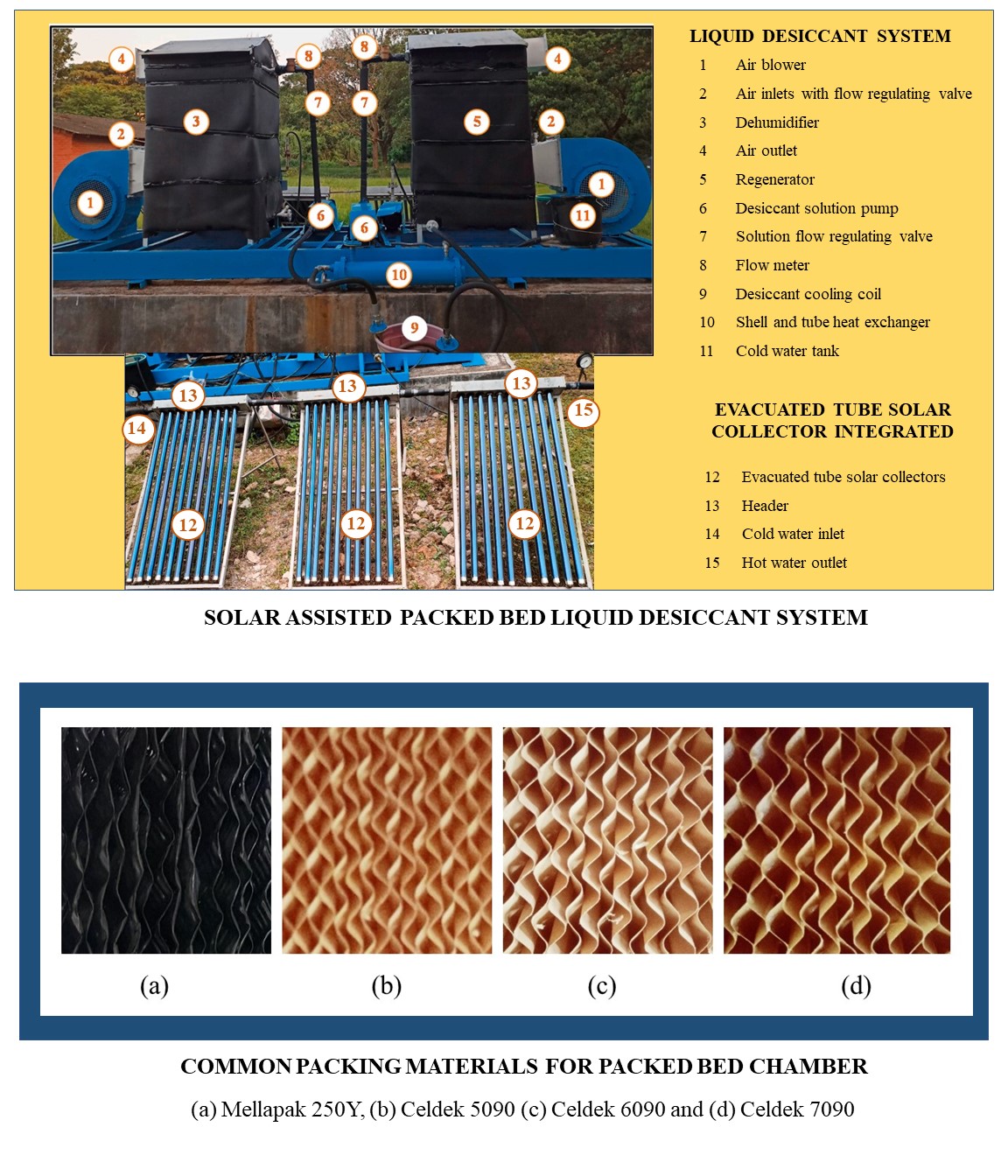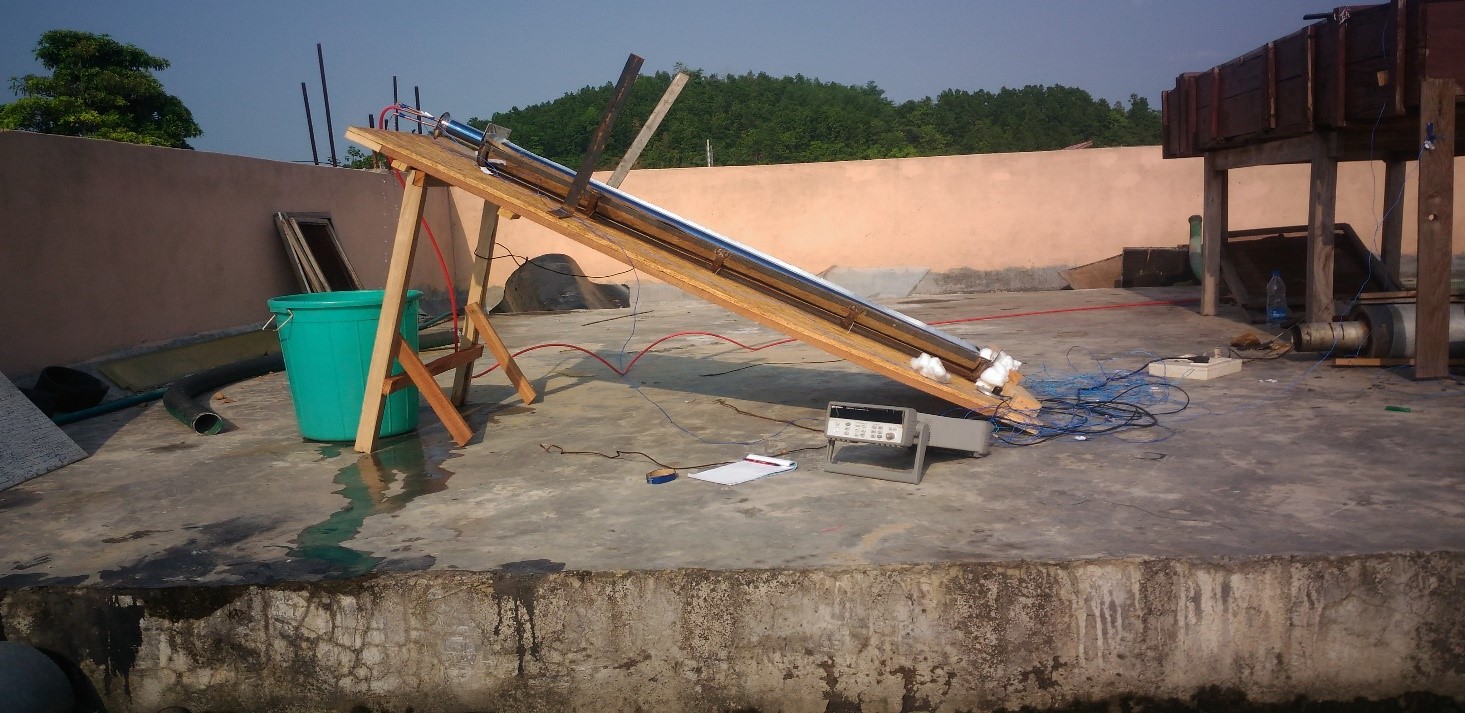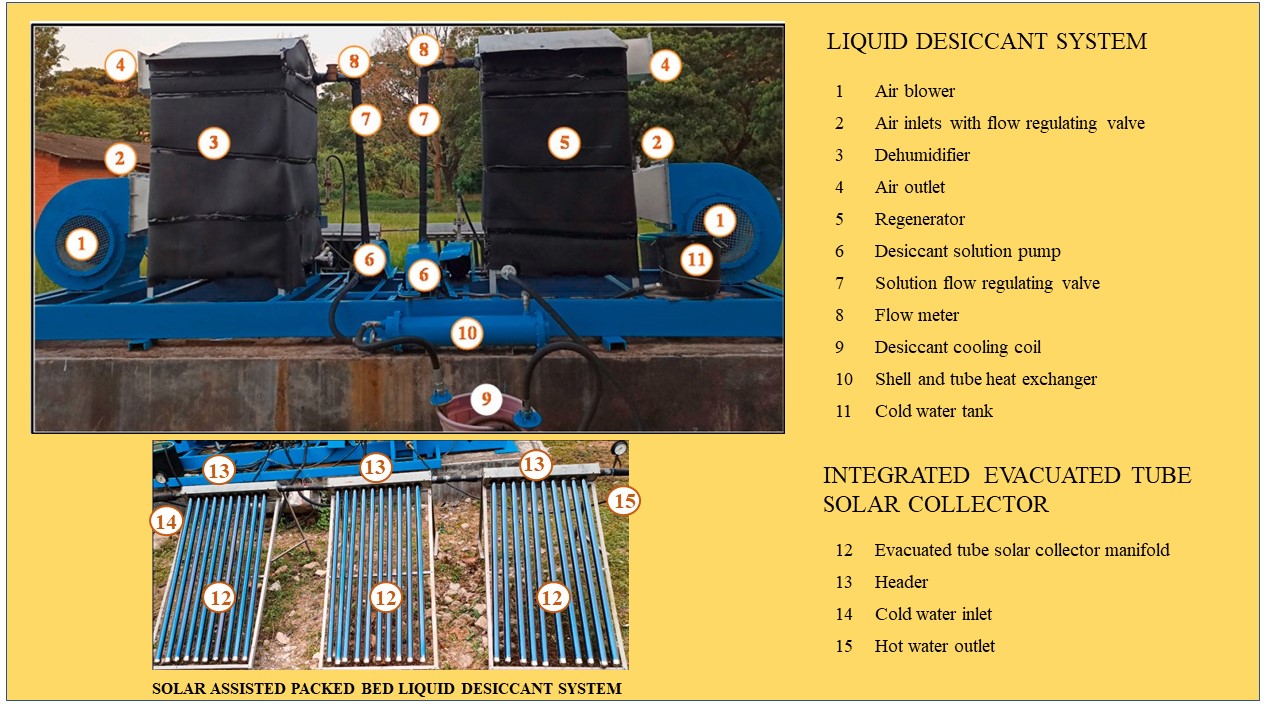Refrigeration Lab
Liquid Desiccant Air Conditioning System:
In hot and humid climates, to maintain comfort conditions, remove air
borne contaminants and protect sophisticated equipment’s,
dehumidification of ambient air is crucial. Before 20th
century, for dehumidifying the ambient air, traditional vapour
compression and vapour absorption based air conditioning systems were
widely used. These type of dehumidification processes consume more
power and possess high energy demand. To overcome this issue, in
recent years, desiccant based air conditioning system has been
introduced.
Desiccant based air conditioning system is classified as solid
desiccant based air conditioning system and liquid desiccant based air
conditioning system. In recent years, compared to solid desiccant
based air conditioning system, liquid desiccant based air conditioning
system is became advantageous due to less air side pressure drop, less
maintenance, operational flexibility and utilization of low- grade
thermal energy sources such as solar or waste heat for the
regeneration of liquid desiccant. Therefore, solar driven liquid
desiccant based air conditioning system is chosen for the present
investigation.
Dehumidifier, regenerator and solar collector are the key components
of solar driven liquid desiccant based air conditioning system.
Dehumidifier works based on the principle of condensation whereas
regenerator works based on the principle of evaporation. In the
dehumidifier, desorption of water vapor takes place from ambient air
to the liquid desiccant whereas in the regenerator, absorption of
water vapor takes place from the liquid desiccant to the ambient air.
During absorption and desorption processes, simultaneous heat and mass
exchange occurs in between the air and the liquid desiccant. The
driving force for heat exchange is the temperature difference whereas
for the mass exchange, it is the vapor pressure difference between the
air and the desiccant. These driving forces depend upon the changes in
local temperature and vapour pressure at the air – desiccant
interface.
Milestones Achieved:
- Developed a thermal model for analyzing the simultaneous heat and
mass transfer processes occurring in a counter flow packed chamber
and to predict the performance of the structured packing chamber.
- Developed a 3D numerical model for evaluating the performance of
the individual evacuated U – tube solar collector as well as for the
whole solar collector system.
- Designed and fabricated a liquid desiccant
dehumidification/regeneration system of 18 kW capacity.
- Designed and fabricated evacuated U – tube solar collector system
for achieving the working fluid temperature difference of 35οC.
- Performed a detailed experimental study on liquid desiccant
dehumidification/regeneration system and evacuated U – tube solar
collector system at different operating and ambient conditions.
- Validated the developed thermal models with the experimental data
for both the dehumidification/regeneration system and also for the
evacuated U – tube solar collector system.
- Carried out energy and exergy analyses of the liquid desiccant
dehumidification/regeneration system and the evacuated U – tube
solar collector system.
- Introduced the concept of entransy for heat and mass transfer
processes and analyzed the entarnsy dissipation due to heat and mass
transfer processes between the ambient air and the liquid desiccant.
- Proposed a simplified thermodynamic model for predicting the heat
and mass transfer coefficients along the cross flow packed chamber
by considering the effect of Lewis number.
Gallery
Solar assisted LLDR - jury sonowal
Studies on Solar-driven Desiccant Dehumidification Systems Using Novel, Less-corrosive Desiccants and Improved Packing Materials By Juri Sonowal
Studies on Solar-driven Desiccant Dehumidification Systems Using Novel, Less-corrosive Desiccants and Improved Packing Materials By Juri Sonowal
Studies on Solar-driven Desiccant Dehumidification Systems Using Novel, Less-corrosive Desiccants and Improved Packing Materials By Juri Sonowal
Previous
Next






